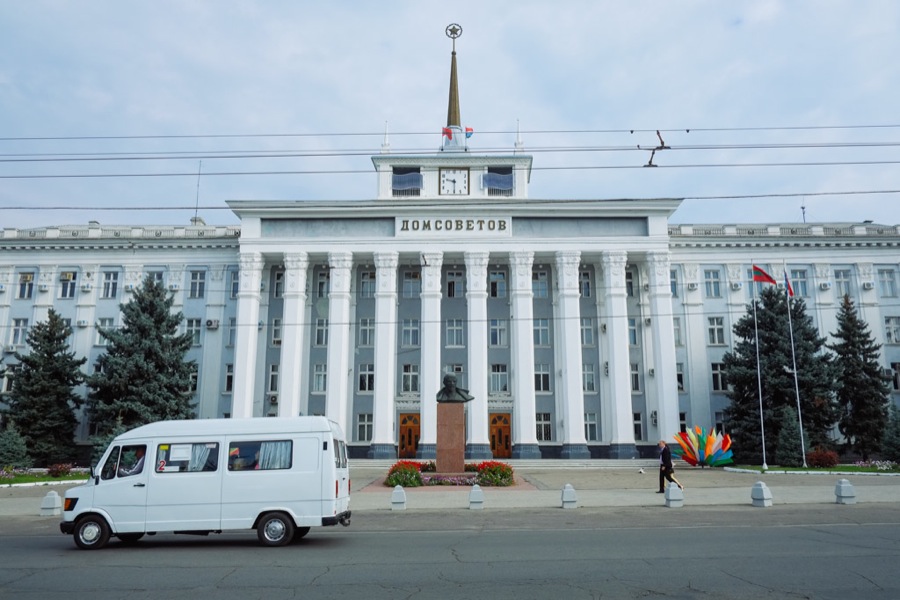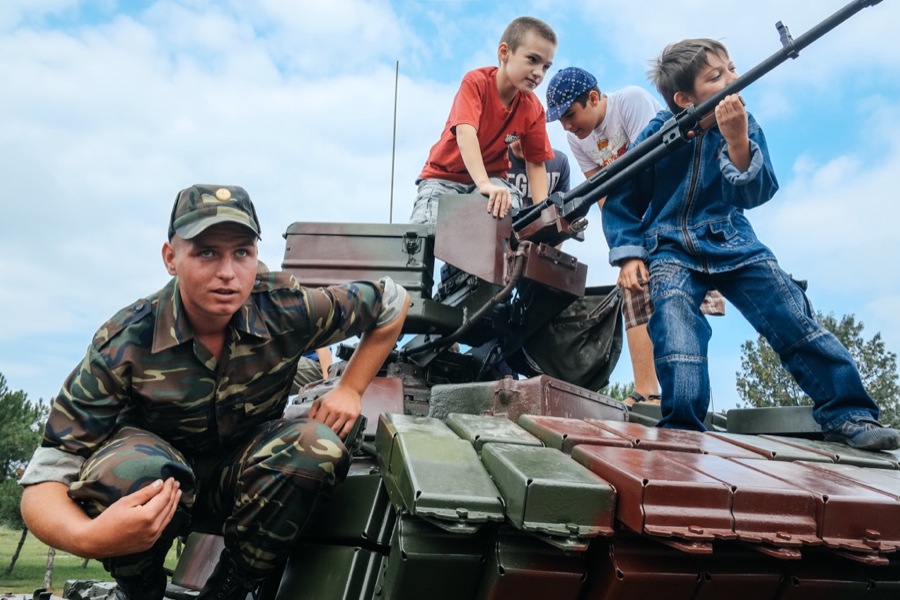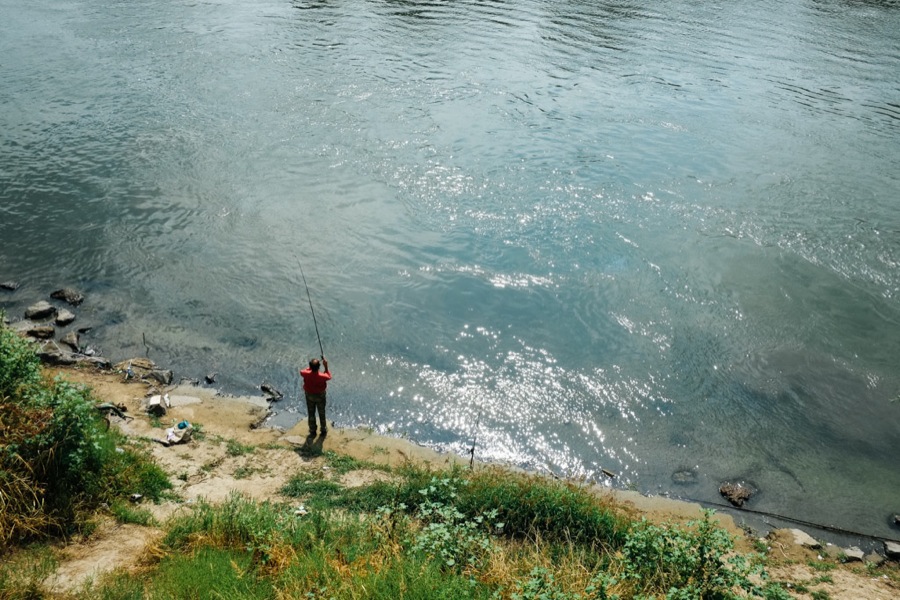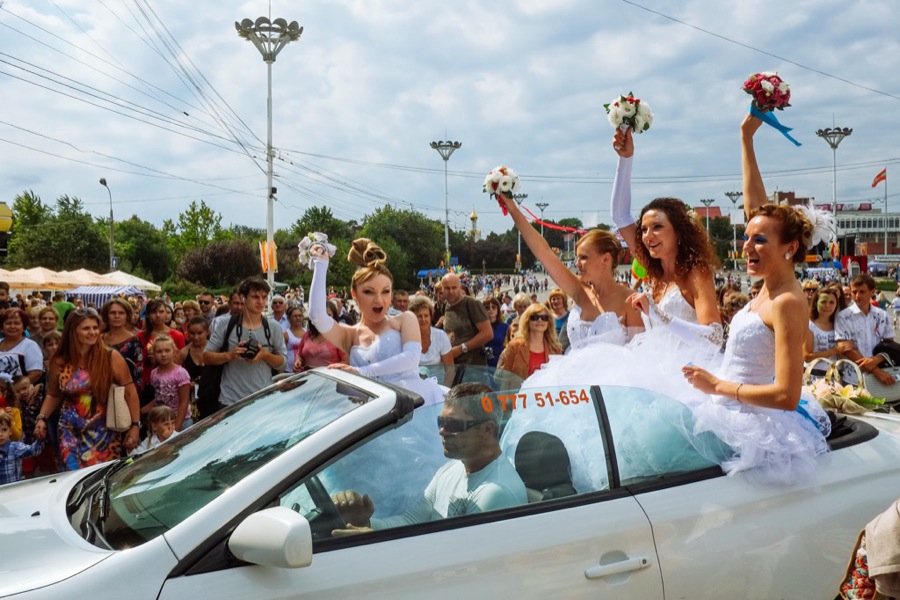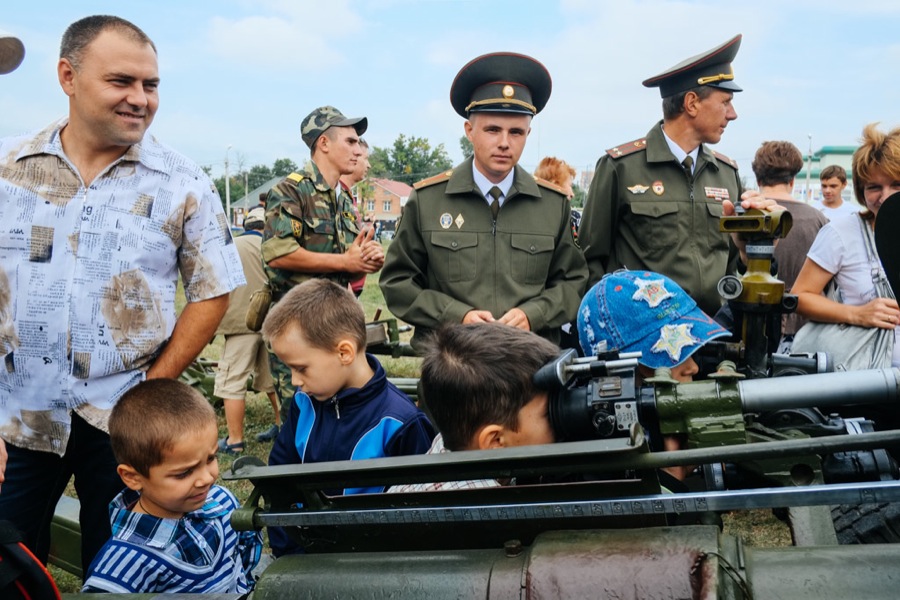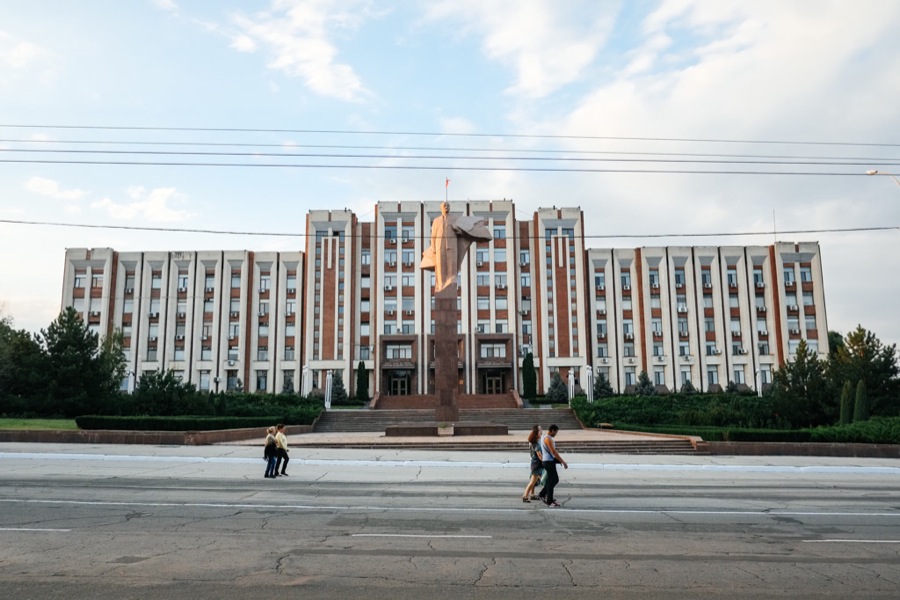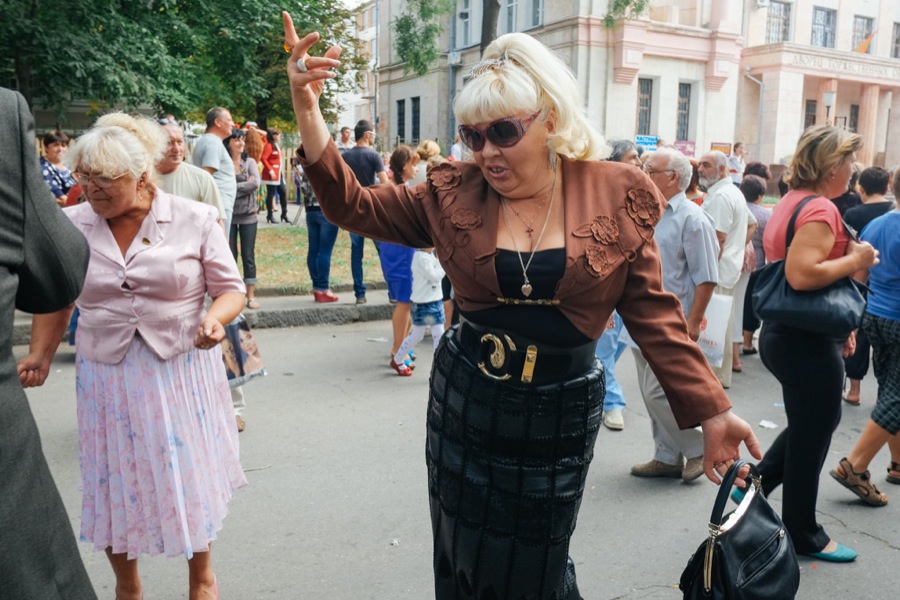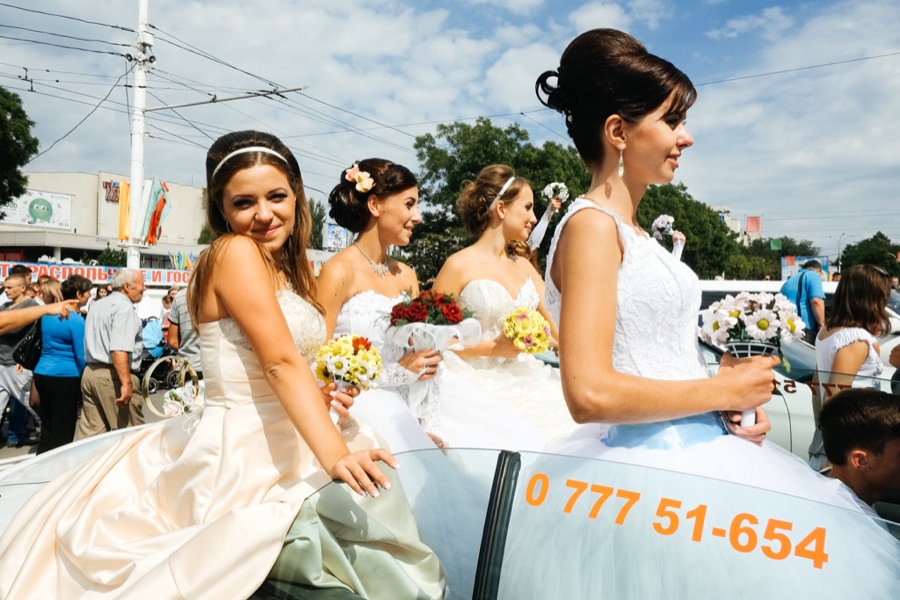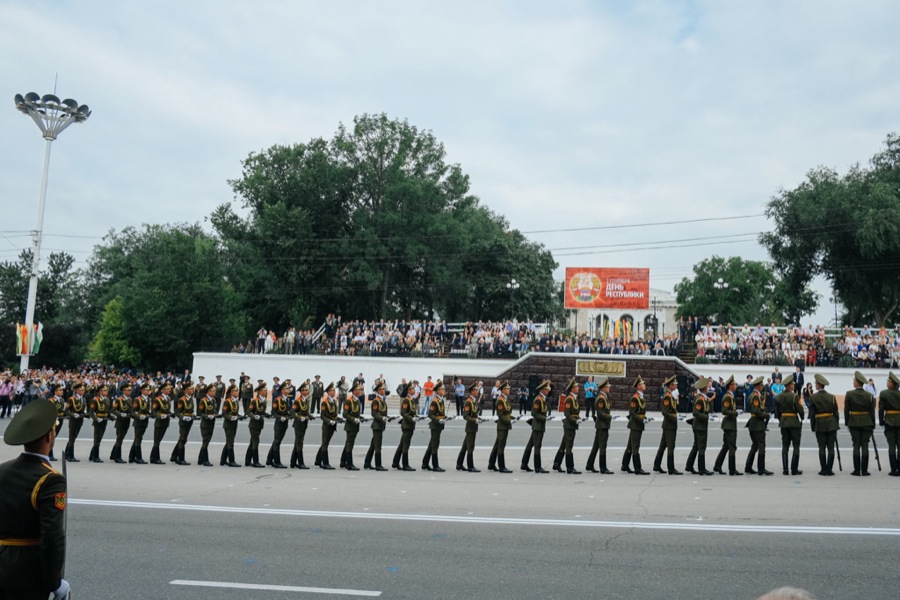At the militarised border crossing closest to Tiraspol, just metres away from the Republic Moldova (which, unlike Transnistria, actually exists), I really was deep in former Soviet lands. And away from prying eyes, sitting inside a very small room.
Two uniformed militia men had asked me to step in for “chat.” The door shut behind me. They glanced at my stack of passports — mine, and my four travel companions’ who were waiting outside. It wasn’t exactly good cop / bad cop. A young guy, who spoke a little English, and his boss — an older man, thick mustache, chest full of military medals…perhaps his overall look and demeanor could be described as nonchalantly dictatorial. The location, the cheap wood-paneled decor, the men — all genuine Hollywood material. But this was real life, in the so-called nation of Transnistria.

